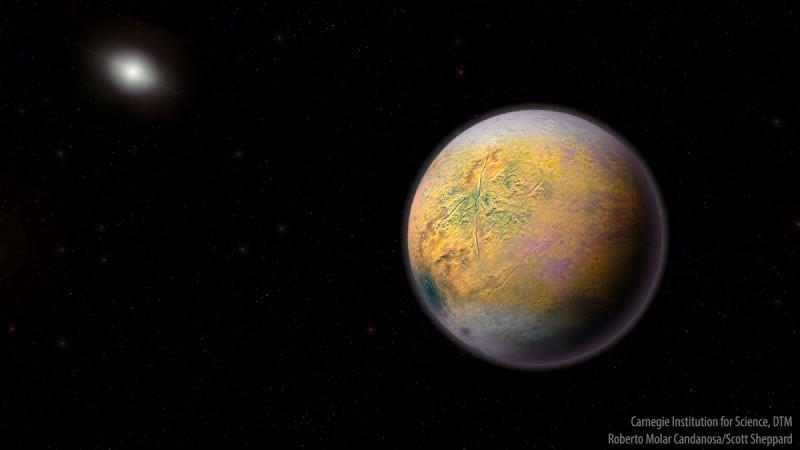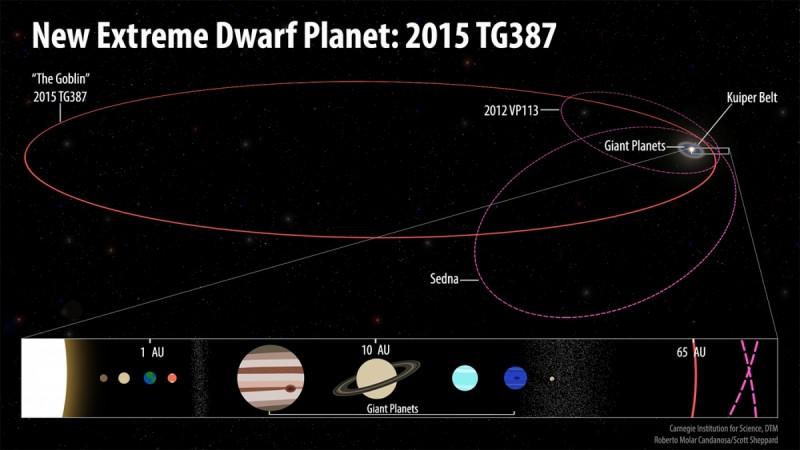
Astronomers looking for the mysterious ninth planet, or planet X, have found a dwarf planet. This suggests that there still is a massive super-Earth far far away from the Sun. And, its discovery could redefine the boundary of the Solar System. It is this planet's orbit around the Sun that suggests that there has to a be a planet X out there.
Astronomers have named this new body 2015 TG387, and its discovery was announced by the International Astronomical Union's Minor Planet Center. It is, according to a release by the researchers from the Carnegie Institution for Science, an extremely distant body that is 80 AU—Astronomical Units where 1 AU is the distance from Earth to Sun—from the Sun. For scale, Pluto, which is not a planet, is about 34 AU. TG387 is two and a half times farther from the Sun than Pluto. Its orbit is about 40,000 years long.

In fact, the object is so far away that even during its perihelion—the part of the orbit that is closest to the Sun—it is no more than 65 AU. It has an uncharacteristically elongated orbit as well, the inner planets in the Solar System have a more or less circular orbit. During its aphelion or furthest distance from the Sun during its revolution, it can be as far away as 2,300 AU, notes the release. TG387 is the only known object that revolves around the Sun and does not have any significant gravitational interactions with the gas giants Neptune and Jupiter, says the report.
"These distant objects are like breadcrumbs leading us to Planet X," said Scott Sheppard, the study's lead author. "The more of them we can find, the better we can understand the outer Solar System and the possible planet that we think is shaping their orbits—a discovery that would redefine our knowledge of the Solar System's evolution," Sheppard added.
TG387 was first spotted in 2015, by the Japanese Subaru 8-meter telescope located atop Mauna Kea in Hawaii, hence the name, but after three years of study, astronomers have, for the first time released details about its discovery.
A paper with the full details of the discovery will be published in The Astronomical Journal.










